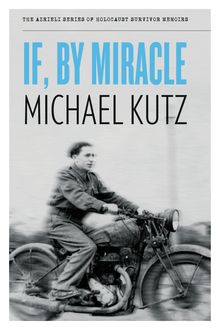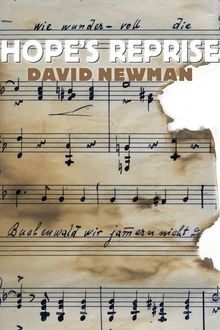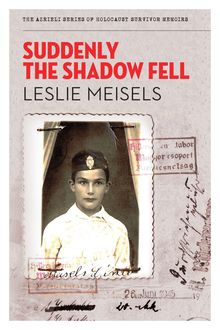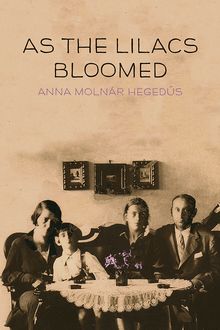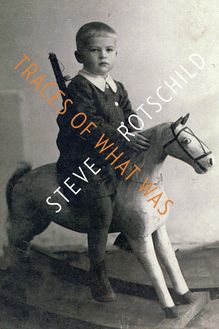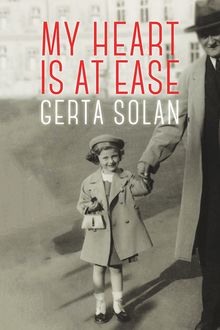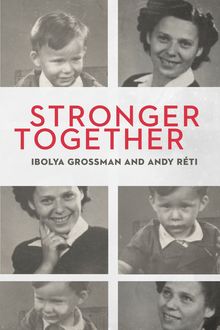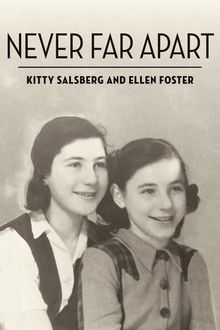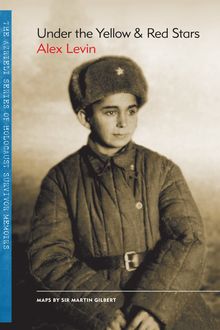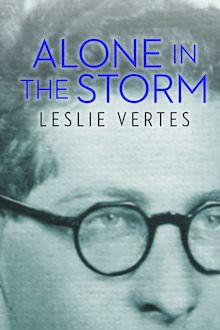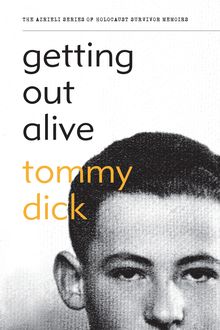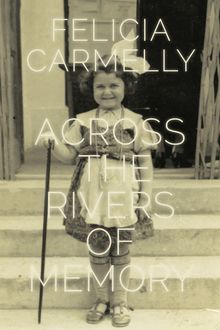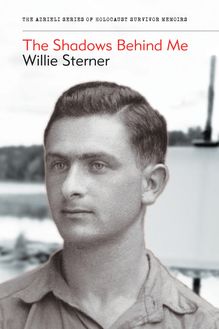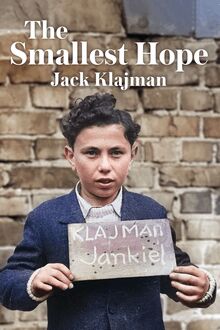Memories from the Abyss/But I Had a Happy Childhood , livre ebook
112
pages
English
Ebooks
2009
Vous pourrez modifier la taille du texte de cet ouvrage
Obtenez un accès à la bibliothèque pour le consulter en ligne En savoir plus
Découvre YouScribe en t'inscrivant gratuitement
Découvre YouScribe en t'inscrivant gratuitement
112
pages
English
Ebooks
2009
Vous pourrez modifier la taille du texte de cet ouvrage
Obtenez un accès à la bibliothèque pour le consulter en ligne En savoir plus
Publié par
Date de parution
01 septembre 2009
Nombre de lectures
2
EAN13
9781897470657
Langue
English
Poids de l'ouvrage
1 Mo
Publié par
Date de parution
01 septembre 2009
Nombre de lectures
2
EAN13
9781897470657
Langue
English
Poids de l'ouvrage
1 Mo
TWO MEMOIRS
Memories From the Abyss
William Tannenzapf
But I Had a Happy Childhood
Renate Krakauer
The Azrieli Series of Holocaust Survivor Memoirs
SERIES II: SENIOR EDITORIAL BOARD
Sara R. Horowitz, Chair Irving Abella Naomi Azrieli Michael Brown Janet Webber Mark Webber
Senior Editor for this volume: Michael Brown
Andrea Knight, Managing Editor Elin Beaumont, Program Coordinator Aurélien Bonin, Research & Translation Erika Tucker, Program Assistant Jody Spiegel, Executive Coordinator
Tamarah Feder, Managing Editor & Program Manager (2005–08)
Mark Goldstein, Art Director Maps by Sir Martin Gilbert and François Blanc
Contents
The Azrieli Series of Holocaust Survivor Memoirs
Series Preface: In their own words...
Dedication
Introduction
Memories From the Abyss
Author’s Preface
Under the First Soviet Occupation
Under German Occupation
Under the Second Soviet Occupation
In Brzeg nad Odra
In Eggenfelden
Yizkor
Maps & Photographs
But I Had a Happy Childhood
Dedication
Author’s Preface
Hiding and Surviving
Home Again
The First Transition
The Second Transition
Ocean Crossing
School Days
Summers
Glossary
Copyright
About the Azrieli Foundation
Also Available
Series Preface: In their own words...
In telling these stories, the writers have liberated themselves. For so many years we did not speak about it, even when we became free people living in a free society. Now, when at last we are writing about what happened to us in this dark period of history, knowing that our stories will be read and live on, it is possible for us to feel truly free. These unique historical documents put a face on what was lost, and allow readers to grasp the enormity of what happened to six million Jews – one story at a time.
David J. Azrieli , C.M., C.Q., MArch Holocaust survivor and founder, The Azrieli Foundation
Since the end of World War II , over 30,000 Jewish Holocaust survivors have immigrated to Canada. Who they are, where they came from, what they experienced and how they built new lives for themselves and their families are important parts of our Canadian heritage. The Azrieli Foundation-York University Holocaust Survivor Memoirs Program was established to preserve and share the memoirs written by those who survived the twentieth-century Nazi genocide of the Jews of Europe and later made their way to Canada. The program is guided by the conviction that each survivor of the Holocaust has a remarkable story to tell, and that such stories play an important role in education about tolerance and diversity.
Millions of individual stories are lost to us forever. By preserving the stories written by survivors and making them widely available to a broad audience, the Azrieli Series of Holocaust Survivor Memoirs seeks to sustain the memory of all those who perished at the hands of hatred, abetted by indifference and apathy. The personal accounts of those who survived against all odds are as different as the people who wrote them, but all demonstrate the courage, strength, wit and luck that it took to prevail and survive in such terrible adversity. The memoirs are also moving tributes to people – strangers and friends – who risked their lives to help others, and who, through acts of kindness and decency in the darkest of moments, frequently helped the persecuted maintain faith in humanity and courage to endure. These accounts offer inspiration to all, as does the survivors’ desire to share their experiences so that new generations can learn from them.
The Holocaust Survivor Memoirs Program collects, archives and publishes these distinctive records and the print editions are available free of charge to libraries, schools and Holocaust-education programs across Canada, and to the general public at Azrieli Foundation educational events. Online editions of the books are available on our web site, www.azrielifoundation.org .
The Israel and Golda Koschitzky Centre for Jewish Studies has provided scholarly assistance and guidance in the preparation of these memoirs for publication. The manuscripts as originally submitted are preserved in the Clara Thomas Archives and Special Collections at York University, and are available for review by interested scholars.
The Azrieli Foundation would like to express deep appreciation to Tamarah Feder, Managing Editor and Program Manager 2005–2008 for her contribution to the establishment of this program and for her work on Series I and II . We also gratefully acknowledge the following people for their invaluable efforts in producing this series: Mary Arvanitakis, Elin Beaumont, François Blanc, Aurélien Bonin, Florence Buathier, Mark Celinscack, Nicolas Côté, Jordana de Bloeme, Darrel Dickson (Maracle Press), Andrea Geddes Poole, Sir Martin Gilbert, Esther Goldberg, Mark Goldstein, Elizabeth Lasserre, Lisa Newman, Carson Phillips, Susan Roitman, Judith Samuels, Randall Schnoor, Erica Simmons, Jody Spiegel, Mia Spiro, Erika Tucker and Karen Van Kerkoerle.
To my dear wife, Charlotte Tannenzapf z’l, who was my constant companion for 69 years;
To my daughter, Renate, and her children, Rob, Lianne and Shulamit (Susan) so that they may never forget;
To my sister, Ester Mieses, in Israel and her family;
And in remembrance of my mother, Gisella, my sisters, Klara, Shancia and Nitka, who were murdered with their families in the Holocaust.
Introduction
Scale and scope are two of the unique aspects of the Holocaust. Its Jewish victims number some six million. The hands-on perpetrators, Germans and their collaborators in eastern and western Europe, may number more than a million. The bystanders in Europe and the Americas who knew what was happening and remained silent are countless. The numbers alone overwhelm us. So, too, does the unprecedented geographical range of the Holocaust: from the English Channel to the Ural Mountains, and from Norway to North Africa.
But if the massiveness of the Holocaust engulfs us like a tidal wave, we need to remain aware that it was not, in fact, a natural disaster, not an unstoppable earthquake nor a tsunami. It was a singular event in human history. And while the Holocaust was a mass happening, every victim was an individual with a unique story, with his or her own reaction to the particular evils encountered or, on occasion, committed. Every act of brutality, moreover, every murder – even every act of silent acquiescence – was the result of a conscious decision by an individual. As Daniel Mendelsohn has said, everything that happened in the Holocaust “happened because someone made a decision. To pull a trigger, to flip a switch, to close a cattle car door, to hide, to betray.” 1 The Holocaust is an event that was caused by individuals and that affected individuals.
The two memoirs in this volume are by William Tannenzapf and Renate Krakauer, a father and daughter who recount much that is familiar to students of the Holocaust. To some extent, what they have to tell echoes what we read in other accounts about that monstrous event, perhaps in different words or with different names attached to people and places, but essentially the same story. The German “beast” appears in Tannenzapf’s memoir in the guise of Hans Krueger, a commanding officer in the occupation force serving in Stanisławów, then in eastern Poland and now in western Ukraine, where the Tannenzapfs lived. The helpless Jewish victim is personified in the beautiful, dark-haired young woman whom Krueger, on horseback, took by the hair and dragged through a construction site over sharp, pointed rocks until she expired. What happened in Stanisławów was typical for eastern Poland in the Holocaust period. 2 In just over sixteen months, some 70,000 Jews were shot in Stanisławów and nearby communities and another 12,000 were deported to the Belzec death camp by the Germans with the assistance of local collaborators.
There is more to these two memoirs, however, than a retelling of events that are, alas, not unknown to many readers. At the same time that the books present themes and characters in situations and locations familiar to many, they recount the unique experiences of three individuals and the people they encountered in particular places during the Holocaust and its aftermath. What happened to them happened only to them. And their tale, like that of others, must be told, if we are to know the event that was the Holocaust and the people who were caught up in it.
There is an additional significant aspect of these two stories, beyond their uniqueness as accounts of individual Jews in Nazi Europe. Tannenzapf is Krakauer’s father, and, in fact, the memoirs tell the same story but from different perspectives. The father’s memories are mostly those of hardship and heartbreak, although he is careful to document humanity and decency where he finds them. (The Poles, Russians, Jews, Americans, and Canadians here are a mixed lot, some admirable, some not. There are almost no Germans or Ukrainians who act decently, and presumably that was Tannenzapf’s experience. He refrains from sweeping categorizations, preferring to highlight particular encounters and individuals.) On the other hand, Krakauer reports having “had a happy childhood.” In what is most unusual, if only because of the small number of families that survived intact, we get here two perspectives on many of the same events, sometimes two different evaluations of the same people.
Tannenzapf was born before World War I in Stanisławów, a small city of some 65,000 residents, Poles, Ukrainians, and Jews. The Jewish population exceeded 25,000 at its peak in the late 1930s; only some 1,500 were alive in 1945. More than fifty synagogues and prayer houses, as well as schools
